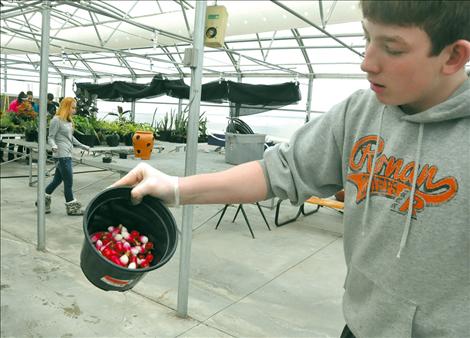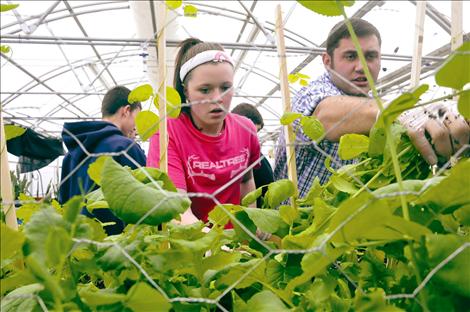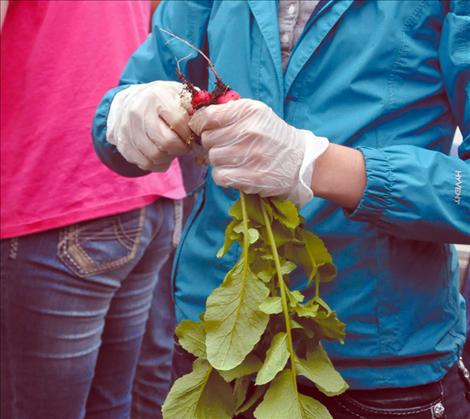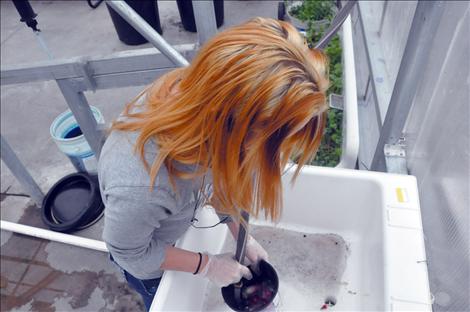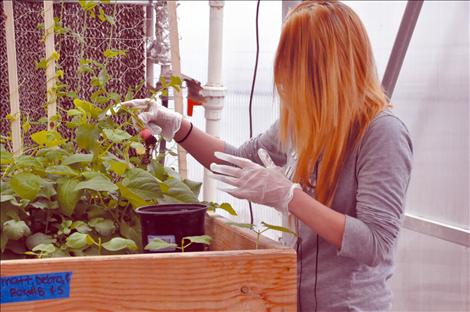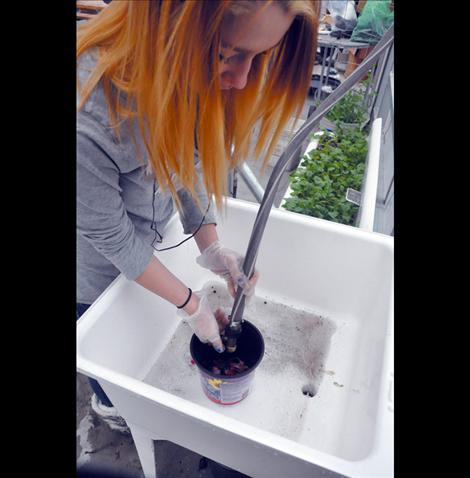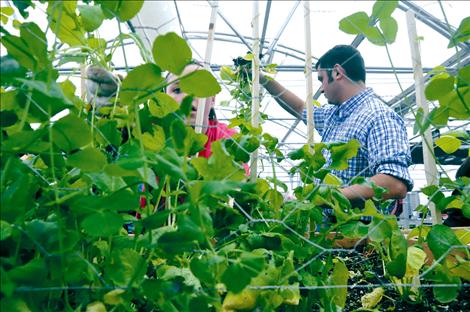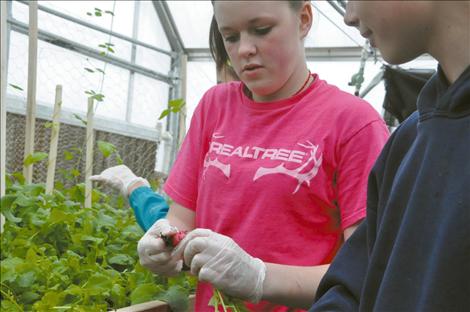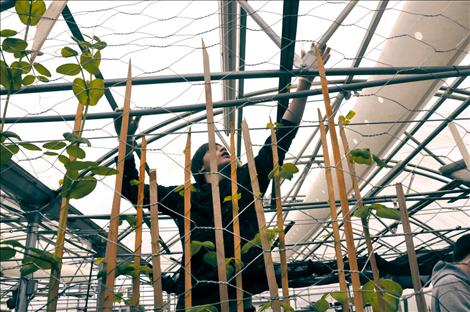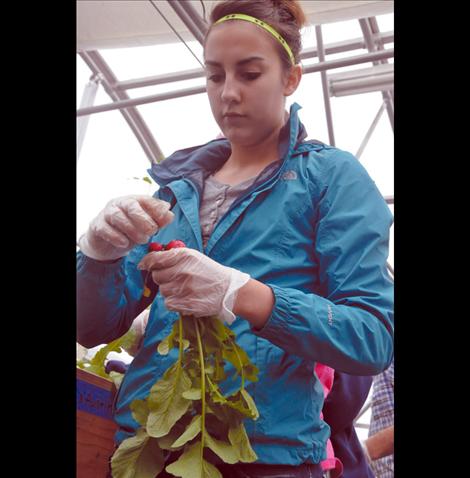Homegrown radishes on school menu
Hey savvy news reader! Thanks for choosing local.
You are now reading
3 of 3 free articles.
Bitter cold has snuffed the life out of the last of any fruits and vegetables living along the valley floor in recent weeks; but on the day before Thanksgiving, Ronan High School students dug up radishes in a late harvest protected by a warm greenhouse.
The radish growing project is part of a multi-faceted effort to bring more nutritious, locally grown foods to the district while teaching children about food production.
“It’s good to show kids that food doesn’t come from the grocery store,” Agriculture Instructor Reese McAlpin said.
Many of the students in the class had never grown plants before, despite living in an area rich in agriculture.
“It can be a little challenging,” McAlpin said of introducing students to the concept of growing things. The class meant to intercrop radishes with beans, carrots, peas, swiss chard and peas, but the radishes took over the soil in the wooden grow boxes.
“This is why we thin, guys,” McAlpin said as he pulled hands full of miniscule radishes that were undernourished because of too much competition. The group was able to harvest five pounds of radishes.
“I think I did good,” Gradon Irish said, as he held up a small six-inch wide, round bucket filled with an inch or so of the vegetables.
Classmate Troy Barney worked nearby.
“I loved growing them,” Barney said. His favorite part of the project was “swamping” or filling the grow boxes with water. The eight boxes were built by the shop class last year. They were filled with a combination of sunshine mix and eco-growing mix and the radishes were planted in September.
Three months later the bounties of the harvest are destined for third and fourth grade class snack times, where students will eat and learn about the origins of their food.
“Every day students in both elementary schools get a fresh fruit or vegetable as a snack,” Food Service Supervisor Marsha Wartick said. “Everyday we try to do something different, and we try to do something local. “
For the past decade the Ronan district has worked to transform the idea of stereotypical “cafeteria food” into something that is more nutritious and delicious. The movement began slowly by purchasing more whole grains and vegetables, but now includes a push to buy foods from farms that are closer to the school, so it stays fresher longer. New federal programs allow for these kinds of food sources, when they previously only let schools purchase items from the lowest bidder.
The programs make it possible for many students to try fresh foods their families might not be able to afford.
“We’ve tried jicama and other different things that some families would never be able to afford at home or try at home,” Wartick said. “Sometimes these two meals are the only meals they get.”
If students don’t like a certain recipe or ingredient, the staff tries to incorporate it in a different way so students want to gobble up the offerings.
“If they don’t eat it we change it, because if they don’t eat it, it’s not nutritious,” Wartick said.
While Wartick is proud of the work being done to bring better food to Ronan students, she knows the school’s offerings are not in the norm nationally.
“Even the new teachers will come in and they are just in shock about how much we offer,” Wartick said.
McAlpin said he hopes the school’s greenhouse can be made more efficient so students can grow more of their own food in the future.















